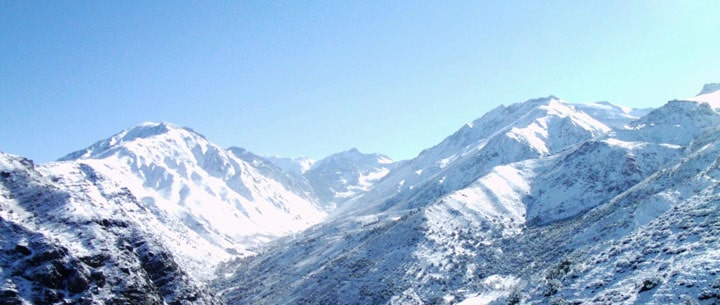Lush Valleys to Snowy Peaks
From my front-row seat at “Pure Energy, Pure Chile” – a multimedia light show celebrating Chile’s Bicentennial – the presidential palace in the capital of Santiago was a spectacular site, illuminated in vivid purple. The building became the backdrop for a visual history lesson depicting scenes of the country’s early settlers and struggle for independence. Then, two words flashed across the length of the palace: “Viva Chile” (“Long Live Chile”). It was enough to make me patriotic about a place where I’d only spent one week.
There is indeed a lot of living to do in this country that, on average, is only 100 miles wide. In one short week, a group of fellow journalists and I marveled at historical buildings and modern graffiti art, sipped award-winning wines and celebrated longstanding Chilean traditions. We toured the capital, visited ski resorts at 10,000 feet above sea level, and explored coastal destinations. And each stop along the way was less than 90 minutes by car. To make things easy, the group enlisted Metropolitan Touring, one of South America’s largest touring companies, to handle ground transportation and tours.

Capital Grandeur
Our trip began in Santiago, which sits in a basin framed by the Andes Mountains on the east and theChilean Coastal Range on the west. Enroute from the airport to our hotel, I caught my first glimpse of the magnificent peaks—one of many humbling views to come.
Santiago’s centrally located barrio of Providencia, where we stayed, was the ideal jumping off point for a driving tour of the city, putting several main attractions within reach. Our enthusiastic guide, Piankhy, led us to sites near the main thoroughfare, a 10-lane avenue running east-west through the city. Like many of Chile’s streets and parks, the avenue is named for General Bernardo O’Higgins, who liberated the country in 1818. To locals, however, it’s known simply as “the Alameda.”
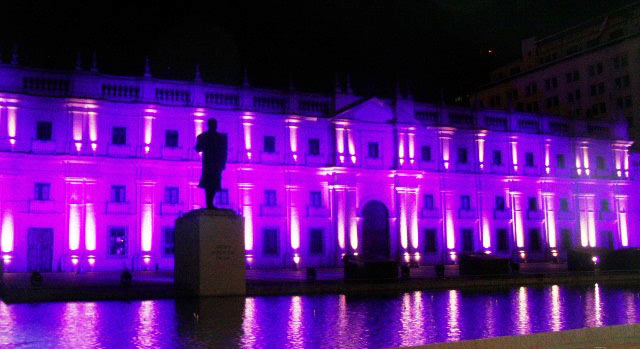
A few blocks from the Alameda, Constitution Square contained historical buildings including the presidential palace (La Palacio de la Moneda), which was originally home to the national mint. The palace was also the site of the 1973 coup d’état that put Dictator Augusto Pinochet in power for nearly 20 years. Built by Italian architect Joaquin Toesca, it reflects the neoclassical European influence on architecture throughout Santiago.
Another of Toesca’s structures, the Metropolitan Cathedral, sat further north in the Plaza de Armas where the city’s first church once stood. The plaza is bordered by pedestrian walkways like Paseo Ahumada, where we encountered a curious place called Café Haiti and experienced a Santiago pastime called “café con piernas” (coffee with legs). The legs in question became clear upon entering: it was manned by scantily-clad waitresses serving a mostly male clientele from behind a stand-up coffee bar.
Our tour took us through other areas like the bohemian barrio of Bellavista – a trendy neighborhood populated with bars, clubs, restaurants and cafes –before we settled for lunch at the Central Market, a steel structure dating back to 1872 and resembling an old railroad station. It’s packed with local fishmongers, more than 70 restaurants, and vendors selling crafts, wine and produce. Here, we sampled our first Pisco Sour (Chile’s national drink, made with pisco liquor); enjoyed Chilean fish like reineta and congrio (conger eel); and spotted a couple dancing Chile’s national dance, the cueca. During this courtship dance, the man lures the woman with a handkerchief depicting the size of his … land.
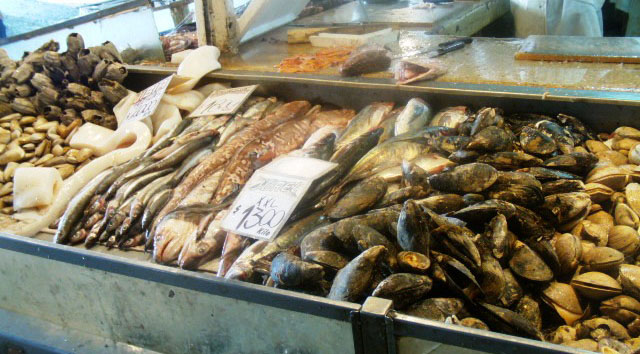
We ended our tour where Santiago’s story began: atop Santa Lucía Hill, where the Spanish conquistador Pedro de Valdivia founded the city in 1541. It’s not the tallest of Santiago’s hills – that distinction belongs to Saint Christopher Hill – but it offers one of the best aerial views of the sprawling city.
Peak Pursuits
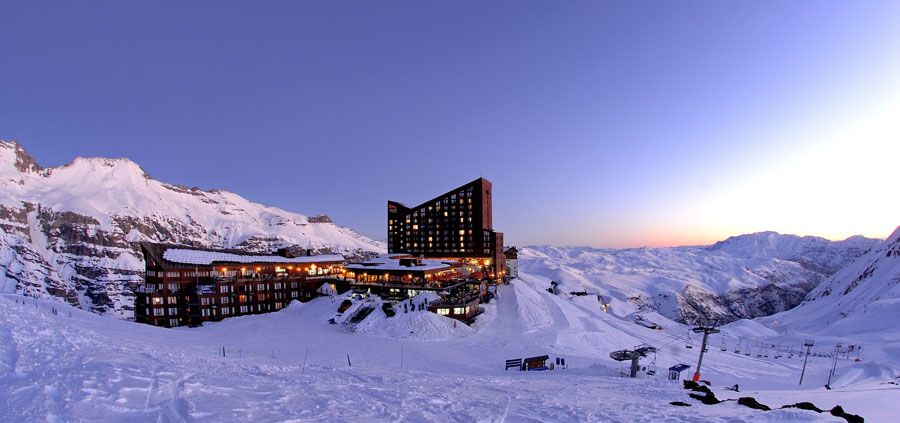
Our driver wasn’t quite so enthusiastic about the next day’s excursion to Valle Nevado Ski Resort, between 45 to 90 minutes from Santiago, depending on road conditions.
“He doesn’t really enjoy this trip,” explained Piankhy.
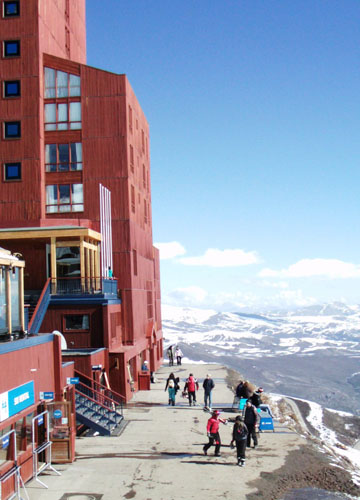
That comment made better sense halfway into the drive, when we found ourselves stuck in the snow on a narrow mountainside road. We saw the minor setback as a photo opportunity, while Piankhy told tales of nearby El Plomo Hill, where the mummy of a sacrificed Inca child was once found (it’s on display in the National Museum of Natural History).
Once chains were fastened to the van’s tires, we proceeded to the ski center via the only road possible and the view from the top made it well worth the trouble.
With its highest peak at 12,000 feet about sea level, Valle Nevado Ski Resort offers more than 2,000 acres of terrain, the largest skiable area in South America. Add the two neighboring resorts of Farellones-El Colorado and La Parva, which Valle Nevado guests can access for an additional fee, and that number climbs to nearly 7,000 acres.
Eager to hit the slopes, our group separated, with me eyeing the beginner hill as my colleagues contemplated heli-skiing deep in the Andes. When my adventure became short-lived – I could only spend so much time sliding downhill on my backside – I headed for the lodge to learn more about this 22-year-old resort.
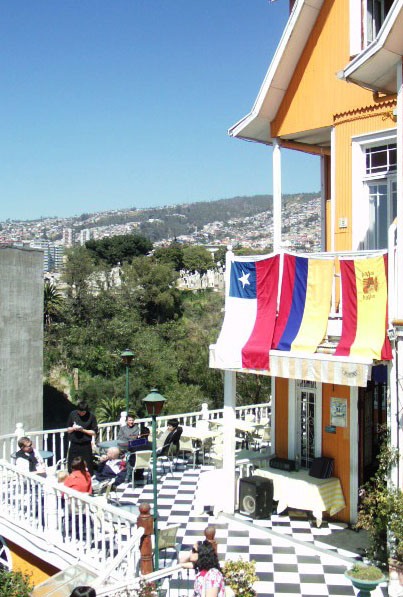
Since it offers the “best snow” in Chile and a range of amenities, Valle Nevado hosts international competitions and serves as a training facility, said the resort’s PR Manager for North America, Kristina Schreck (as we arrived she was prepping for the U.S. Women’s Ski Team). Among resort highlights are three newly renovated hotels, a pool-sized hot tub, private apartments, six restaurants, a full-service spa and fitness center and several bars and lounges—with more to come.
Some $150 million is being invested over the next decade to turn Valle Nevado into the largest modern ski center in South America, explained Schreck. Plans include new shops and restaurants, a fourth major international hotel (yet to be disclosed) and a gondola that will be the first of its kind at a Chilean ski resort. Developers also hope to grow Valle Nevado’s summer clientele, offering sports like trekking and horseback riding and appealing to corporate retreats (ski season is June – October).
Before returning to Santiago, the group dined at the onsite restaurant Don Giovanni, an Italian eatery whose Chilean sea bass was every bit as good as you’d expect in its country of origin.
“Jewel of the Pacific”
After flying south for a few days (more to come in an article on the city of Pucón), we set out on another road trip from Santiago, this one to the port city of Valparaíso, about an hour west.
Known as Chile’s first cosmopolitan city, Valparaíso is both the meeting place of the Chilean Congress and an important coastal port. While we enjoyed remarkable hillside views atop places with names like “Cheerful Hill,” Piankhy was admiring a different sight. “The girls in Valparaíso have the best legs in all of Chile because they are always walking up and down the hills,” he said with a smile.
Though San Antonio now ranks as Chile’s most important seaport, Valparaíso was the major stopover for ships traveling between
the Atlantic and Pacific oceans during the 19th century. It was nicknamed the “Jewel of the Pacific” by sailors – and it’s easy to see why. The city is marked by charming (albeit steep) cobblestone streets, ocean views, brightly colored architecture and century-old cable cars transporting tourists and locals up and down. The oldest of these cable cars, the Concepción lift, can be found on the Gervasoni Promenade, frequently lined with vendors selling jewelry and paintings. Another type of artwork – elaborate graffiti art – can be found throughout the city. Graffiti is not only accepted, it’s held to high standards and flaunted by locals, like the man who closed his garage door so we could photograph its spray-painted design.
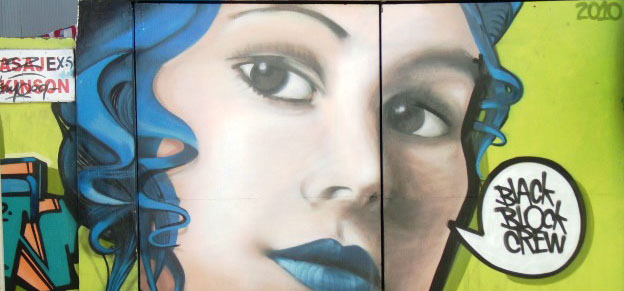
Valparaíso is also home to La Sebastiana, one of three houses in the country once owned by the famous poet Pablo Neruda. Self-guided walking tours can be taken through his ornate, five-floor home that contains furniture and art from around the world and overlooks the inspiring Valparaíso Bay. Among the well-known poems by Neruda are “Ode to Valparaíso” and “La Sebastiana.” It’s only fitting that the colorful poet, who wrote in green ink and once said that “water tastes best when wrapped in green and red,” would build a home in this bright city.
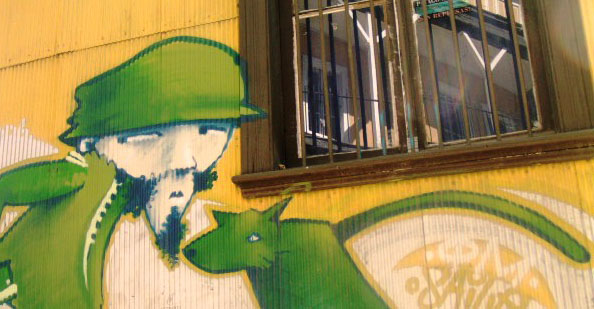
It was here in Valparaíso, a UNESCO World Heritage Site and one of Chile’s most important cities, that the final celebration of the country’s Bicentennial was held. One million people gathered along the coast for the largest Navy and Air Force parade in Chile’s history. And although we missed the event by one day, just imagining it brings to mind the national chant we heard throughout our weeklong trip:
“Chi Chi Chi, le le le, viva Chile!”
The international dialing code for Chile is 56.
Getting There:
LAN Airlines: Latin America’s largest carrier offers direct flights from New York City, Los Angeles and Miami to Santiago’s Comodoro Arturo Merino Benítez International Airport, as well as flights with connections in Lima, Peru. LAN recently announced plans to merge with Brazil’s TAM airlines to create LATAM Airlines Group. (866) I FLY LAN; www.lan.com
Getting Around:
Metro/Bus: Santiago’s metro system comprises five subway lines, with trains running between roughly 6:00am and 11:00pm (check each station for exact hours). In addition, buses run around-the-clock. You can purchase a bip! card for less than $3 US. The card works for both subway and bus and allows for free transfers between the two. www.metrosantiago.cl/
Metropolitan Touring: If you’re planning to travel throughout Chile, this tour operator will arrange itineraries and transportation between various cities and towns and provides knowledgeable (and entertaining) guides. Metropolitan Touring also has ground-based operations in Ecuador, Peru and Argentina and offers guided expeditions to the Galapagos Islands aboard its own yachts.(877)534-8584; www.metropolitan-touring.com
Where to Stay:
Le Rêve Hotel Boutique: This recently opened Providencia hotel was inspired by Paris’ small properties. It features 28 rooms and three suites, each with LCD TVs, cable and WIFI. Adjoining rooms and a few rooms with terraces overlooking the garden are available. The charming building was declared an historical patrimony and its original French architecture has been restored. Orrego Luco 023; Santiago; (2) 757 6000; www.lerevehotel.cl/ end_of_the_skype_highlighting
Four Points Sheraton, Santiago: Also in Providencia, the Four Points is near several art galleries, boutiques, bars and restaurants, and its proximity to the subway and airport (15 minutes) makes it a convenient place to stay. Though simple, the 112-room, 16-suite hotel includes a small rooftop pool and hot tub that offer a spectacular skyline view. Santa Magdalena No. 111; Santiago; (2) 750 0300;www.fourpoints.com/santiago
Hotel Valle Nevado: Of the three hotels in Valle Nevado, this is the high-end property, offering ski-in, ski-out access, personalized service, and the gourmet La Fourchette restaurant. It has 53 rooms and suites and direct access to the Fitness Center and Spa and the Valle Nevado lounge. Avenida Vitacura 5250 #304; Santiago; (800)_ 669-0554; www.vallenevado.com/en/hotel-ski-resort/
Hotel Puerta del Sol: This family-oriented lodging option at Valle Nevado has 124 connecting rooms and 2-story lofts. North-facing rooms feature terraces and resort views, while south-facing rooms overlook the valley. Among amenities are two restaurants, a bar/lounge, kid’s recreational area, small cinema, and direct access to the outdoor pool. Avenida Vitacura 5250 #304; Santiago; (800)_ 669-0554; www.vallenevado.com/en/hotel-ski-resort/
Tres Puntas: Valle Nevado’s budget friendly, 3-star hotel is within quick walking distance of the slopes. It features 91 double, triple and quad rooms, a restaurant and the Tres Puntas pub. Avenida Vitacura 5250 #304; Santiago; (800)_ 669-0554; www.vallenevado.com/en/hotel-ski-resort/
Casa Higueras Hotel: This boutique property is housed in a converted 1920s mansion in the middle of Cheerful Hill (Cerro Alegre), Valparaíso. Though on the pricey side ($350-$450+ per night), it offers spectacular views of Valparaíso Bay. Most of its 20 rooms have terraces, as does its restaurant. Amenities include a pool, sauna, Jacuzzi and gym. Calle Higuera 133, Cerro Alegre, Valparaíso; (32) 249 7900; www.hotelcasahigueras.cl/
Where to Eat:
Lomit’s: This popular Providencia restaurant serves German-Chilean dishes, such as raw red meat with spices (called crudo), and typical Chilean meat sandwiches including the Churrasco and the Chacarero. If you’d like the works on your sandwich, including copious amounts of mayonnaise, ask for it “completo.” If you request that your sandwich be served “Italiano,” it will come with avocado, tomato, and mayonnaise – the colors of the Italian flag. Av Providencia 1980; Santiago; (2) 233 1897
MosaiCafé at Patio Bellavista: One of several restaurants at this indoor/outdoor dining and nightlife spot in Barrio Bellavista, MosaiCafé features international cuisine. Generous Mexican and Asian-inspired dishes (expect leftovers), sushi and pizzas are complemented by an inventive cocktail list. The dimly lit space, warm red décor and eclectic music make for a great place to socialize. Bellavista 052; Santiago; (2) 248 9965; www.mosaicafe.cl
Patagonia: This inviting restaurant sits on a corner of Santiago’s Lastarria neighborhood, known for its interesting mix of museums, street performers and cabarets. The service is slow at best, but the food and atmosphere are worth the wait. You’ll find plenty of fish dishes on the menu, but Patagonia is a carnivore’s delight, serving up savory meat platters that are perfect for sharing. On a nice day, the outdoor patio beckons. J.V. Las Tarrias No. 96; Santiago; (2) 664 3830;www.patagoniarestobar.cl
Must-Do:
Wine Tasting: Boasting several wine regions with varying climates, Chile is known as a leading producer of Cabernet Sauvignon, Syrah, Malbec, Sauvignon Blanc, Chardonnay, and Carmenere. Within two hours south of Santiago are Colchagua Valley, the country’s largest wine-producing region, and the Maipo Valley, home to the well-known Concha y Toro vineyards. In the San Antonio Valley, about an hour West of Santiago, the organic winery Matetic offers an award-winning Pinot Noir (2008 reserve) and a fruity, dry Sauvignon Blanc (2009 coastal) under its E.Q. brand. Whether you take a day trip or just enjoy a glass of wine with dinner, be sure to take a few sips along your way. Several operators, such as Santiago Adventures offer guided tours. www.santiagoadventures.com,www.winesofchile.org, www.visit-chile.org

